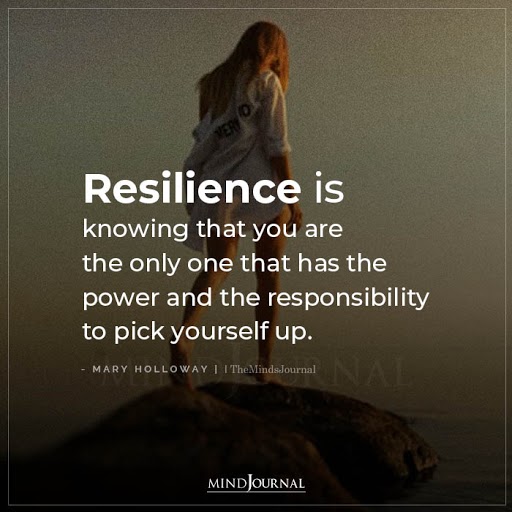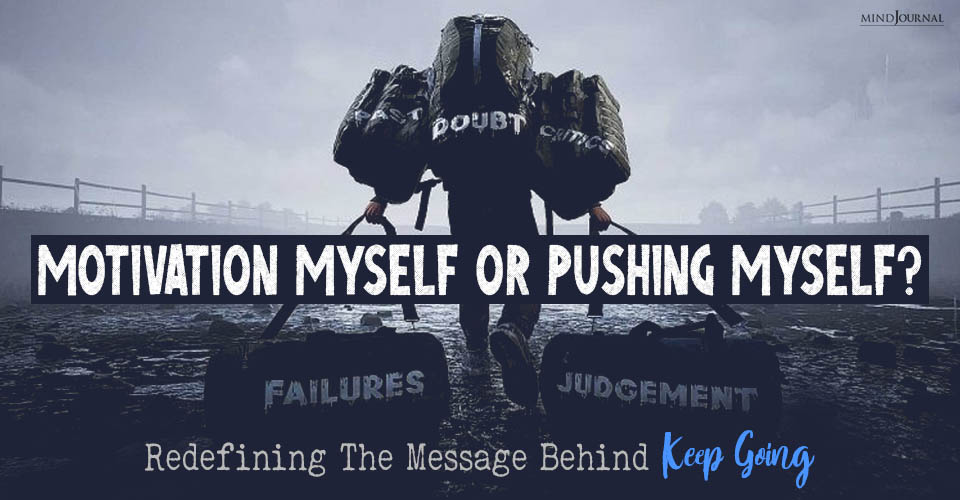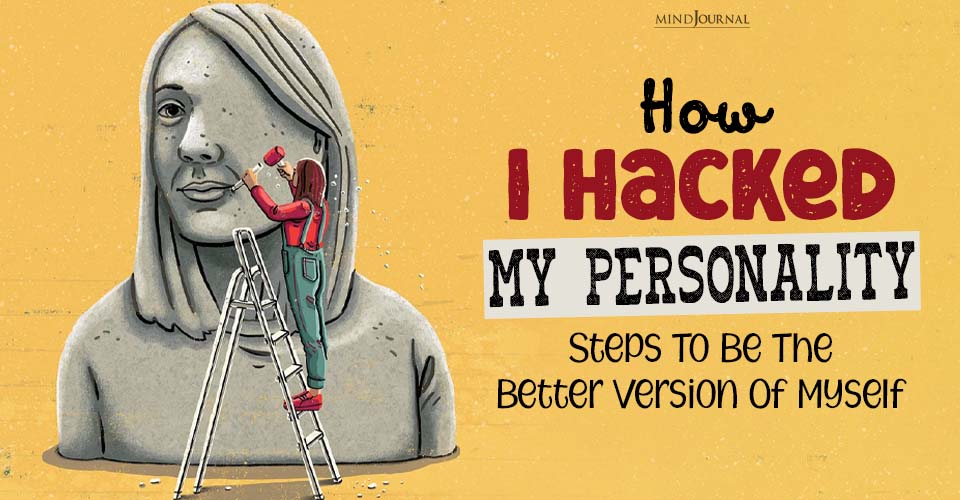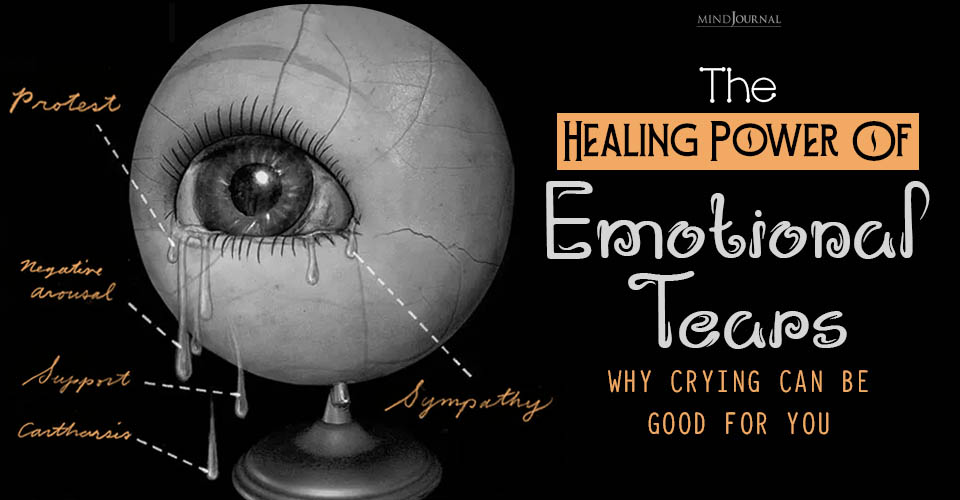Resilience is that amazing skill that helps you recover quickly from difficulties. If you are resilient, then when life knocks you down, you bounce back and you keep going. Sometimes life’s challenges can even make you stronger. I think resilience is so important that I devote a whole section to it in my new book, Outsmart Your Smartphone: Conscious Tech Habits for Finding Happiness, Balance, and Connection IRL. So how do you become a more resilient person?
Unlike positive thinking, self-compassion, or gratitude — which can all be developed when things are going good or going bad — you need challenges in your life to develop resilience. You have to get knocked down in order to learn how to pick yourself back up. Over time, you’ll start to see that being knocked down makes you stronger — plus it makes you less afraid to get knocked down again.
Not sure if you approach challenges in the ways that build resilience?
Maybe you have room to grow and become a more resilient person. To find out how resilient you are, take this super-short well-being quiz, which not only gives you a general idea of you how resilient you are but can also help you identify the other skills you need to build to improve your happiness and well-being.
What did you discover? Do you need to build your resilience? If so, here’s how to do it.
Related: 15 Ways To Be Kind To Yourself (Especially When Feeling Down)
Although there are lots of ways to build resilience, I’m focusing on research-based strategies, from the more basic to the more complex. Choose your favorite strategies to start building your resilience today:
11 Ways To Be A More Resilient Person
1. Stop your negative thought cycles.
Often when bad things happen, we get stuck thinking about negative outcomes. We repeatedly think about what we could have done differently in the past, or how we are going to mess up again in the future. We ruminate on these events because we mistakenly believe that thinking about our hardships over and over again will help us solve them.
Unfortunately, negative thought cycles just get us caught up in our thoughts, instead of taking the actions we need to move forward.
To put an end to these negative thought cycles, which have become well-worn pathways in our brains, we need to short-circuit our thoughts mid-cycle. To do this, we can create a behavioral break or an action plan for what we’ll do when our negative thought cycles get going. Here’s how this works in my life.
I’ll sometimes find myself dwelling on something negative, getting myself worked up more and more as I think about it, until my blood pressure is through the roof, and I just want to scream. When this happens, my negative thought cycles have complete control over me; I know from experience that no amount of positive thinking is going to stop the negative emotions at this point — they are in charge.
So instead of trying to think my way out of my emotions, which is incredibly hard when your negative emotions are strong, I’ll drop everything and go for a five to ten-minute run. This behavioral break forces both my brain and my body to completely switch gears and focus on something else entirely, thus breaking the negative thought cycle.
Exercise seems to be a really effective behavioral break. But if exercise isn’t possible (maybe you’re at work or with other people), try to do something else that uses both your mind and your body. For example, you could excuse yourself for five minutes to practice deep, slow breathing. Deep breathing helps activate your parasympathetic nervous system, which can both calm you and switch off your stress.
For your behavioral break to work, you need to decide what you plan to do before actually being in the situation that calls for it. So take a moment now to decide what you will use for your behavioral break, and how you will know the right time to use it.
When learning to use this strategy, it can be helpful to use it often, even if you’re only a little worked up. This can make it easier to implement during more challenging situations. Try it a few times to start short-circuiting your negative emotional cycles, helping you to recover from challenges more easily.
2. Question the catastrophe.
Catastrophizing is when we expect the worst possible outcome in a situation. For example, you may have lost your job and now believe that you will never be successful, and everyone will think you’re a failure forever. This may sound extreme.
Most of us don’t catastrophize quite this much, but many of us do sometimes believe that the worst possible outcomes will come true. Although being aware of possible negative outcomes can be helpful for planning ahead, when we believe the worst will come true, we set ourselves up for unnecessary stress and poor resilience.
One way to break this thought pattern is to wear a pendant or carry a stone or other small object with you. Every time you find yourself imagining the worst — about a person, situation, or outcome — touch the object. While you are touching the object, remind yourself that the best possible outcome is just as likely to occur as the worst possible outcome. Besides, worrying about it does you no good.
By gaining control over our negative thoughts, they stop being so scary. We start to see those negative thoughts come and go, and we have the skills to handle them. Now we can start actively pursuing challenges — challenges that give us the opportunity to develop resilience and improve our lives in unforeseen and amazing ways.
Related: 5 Simple Steps To Overcome Difficult Situations In Life
3. Overcome your fear of failure.
Unfortunately, many of us avoid failure at all costs. We do so because we are afraid of failure; we worry that people will think poorly of us if we fail, and we feel ashamed when we fail. But by treating failure as a disease to be avoided, we never give ourselves a chance to overcome challenges and practice resilience. As a result, we prevent ourselves from becoming more resilient.
So how do you conquer your fear of failure, so that you can start building resilience?
If you think failure is a threat, like many of us do, your body will prepare for a fight — and you’ll feel like you’re in a battle. On the other hand, if you choose to view doing something hard, something you could fail at, as a challenge, then you’re more likely to think you are capable of handling it. As a bonus, when you view things that you could possibly fail at as challenges, you actually will be more capable and less likely to fail at them.
To build this “challenge mindset,” reflect on past challenges that you’ve overcome. Let’s say you’re worried about starting a new job. Take a moment to think back to other goals you’ve achieved. Remind yourself that you have been successful at things in the past, even small things. When you remind yourself that you have succeeded before, you can help shift towards a challenge mindset.
Next, visualize success. By imagining yourself doing well, you shift your mindset to do well. On the other hand, if you ruminate about what could go wrong, your fear builds, and the failure you fear becomes more likely.
Keep in mind that even if you are able to shift your brain to stop seeing something as a threat, you may feel nervousness or anxiety, but you’ll also experience positive physiological changes that can help you make better use of these negative emotions.

4. Find the benefits of past challenges and failures.
Part of what makes challenges, well, challenging is that we become myopia and only focus on the bad without seeing the good.
So how do you find the benefits of failure?
Plenty of smart folks will tell you that you should reflect on your failures right after you experience them. But negative emotions can cloud your thinking. If you are still feeling upset about a failure, it may be harder to see the benefits or come up with effective solutions.
If this practice is new to you, an easier way to start finding the benefits of challenges may be to look at past challenges — challenges that you’re no longer upset about. By practicing finding the benefits of past challenges, you can strengthen this ability so that it is easier to find the benefits next time.
To find the benefits, start by writing out a list of things you learned from a past failure. For example, if you missed an important deadline, maybe you learned that you need to prioritize better, delegate more, or tone down your perfectionism. Try to really search for as many benefits as you can think of.
Ask yourself these questions to help you:
- Were there, or will there be, any positive outcomes that result from this situation?
- Are you grateful for any part of this situation?
- In what ways are you better off than when you started?
- What did you learn?
- How did you grow and develop as a result of this situation?
Related: 7 Negative Mindsets That Undercut Your Mental Strength and Resilience
5. Emotionally distance yourself from challenges.
When experiencing a challenge, the ability to think about your experiences as if you were “a fly on the wall,” or as if you were someone else who is witnessing your experiences from afar, keeps you from getting stuck in your negative emotions. Emotional distancing also makes it less likely that you will replay the unpleasant details of the event, and as a result, you don’t feel quite as bad when bad things happen.
To practice this technique, first, recall a recent stressful conflict you had with another person. Be sure to choose something very specific. For example, recall when “You got into a fight with John about forgetting your birthday.” Try not to think about fights with John in general.
Now re-imagine the stressful event from an outside observer’s point of view — for example, from the point of view of a stranger on the street or a fly on the wall.
Ask yourself these questions to practice being a fly on the wall:
- Would the observer be able to understand why you are upset?
- Would the observer be able to see the other person’s point of view?
- How would the observer evaluate the situation?
- Might this observer view the situation differently than you do?
If you prefer, you can also practice this on social media. Next time you are reading about one of your friend’s negative experiences on social media, practice switching back and forth from being in their shoes to being in your shoes.
Try to notice how being an outside observer helps make the experience seem less intense.
6. Remember, this too shall pass.
Another technique that can help you better handle stress involves thinking about the outcomes of stressful events in the relatively far future. For example, you might tell yourself that “time heals all wounds,” or “this too shall pass.”
The ability to think about a future where you will no longer be feeling so bad about whatever you’re struggling with helps you get through difficult experiences. It can reduce the intensity of negative emotions and the distress caused by the situation. So next time you are in the midst of a stressful situation, try to look back at the situation sometime in the future.
Start by recalling a recent stressful event. Be sure to choose something very specific. For example, try to recall, “When I failed to get the promotion I was after” instead of failure, in general. Now imagine what your life will be like five years after this event.
Ask yourself these questions:
- In five years, what will you be doing?
- How will you be spending your time?
- How will you be feeling?
- How will you feel about this particular event?
Related: 15 Ways To Be Kind To Yourself (Especially When Feeling Down)
7. Find the silver linings.
The ability to find the silver linings in stressful or difficult situations (also referred to as reappraisal ability) helps us generate positive emotions, even when there is nothing in our situation to generate positive emotions for us.
This is why finding silver linings can help counteract negative emotions, decrease stress, and quicken recovery from stressful events.
How do you find silver linings?
Let’s say that you dropped your sandwich on the ground, and you have nothing else to eat for lunch. You might remind yourself that you’re lucky to even have a sandwich when so many people go hungry. Or, you might see this as an opportunity to go get lunch with co-workers instead of eating your sandwich at your desk.
You see how it works? Now it’s your turn to try. Recall a work or school project that didn’t work out the way you hoped. Now, try finding the silver linings of this situation. How could the situation be worse? What are opportunities that could result from this situation? What are the positives?
Think of as many reappraisals as you can. Try to be creative and think of anything that would make you feel better about this experience.
8. Practice reappraisal while streaming movies.
If you’re having a hard time finding the silver linings in your own life, it might be easier to practice this with other people’s lives. To use others’ experiences to practice reappraisal, plan to practice the next time you stream a movie or show.
Before watching a sad or emotional movie or scene, read these instructions:
While watching the scene or movie, think about what could be learned from the experience, or imagine possible positive outcomes. With these suggestions in mind, think about what advice you would give the characters for how to feel better.
Now ask yourself, how could you apply this advice to your own life? Might these same reappraisals work for you next time you are feeling sad, anxious, or angry?
9. Find the benefits in life.
Benefit finding is similar to reappraisal, but it can be used in negative, neutral, or positive situations. For example, you might say that the benefits of working a really difficult job are that you learn new skills and build character.
But you might also say that the benefits of working a really easy job are that you feel relaxed and have more time to devote to other things you enjoy. With some practice, you can find the benefits to just about any situation.
To practice finding the benefits, first, think about a slightly negative experience you had recently. Try not to choose an experience that is extremely negative — it’s important to choose an experience that’s not too bad when you are first learning how to use this technique.
You can work up to harder experiences as you become more skilled. For example, maybe your car broke down, or you got in a small fight with a friend.
I know that at first, it can seem impossible to find the benefits of these situations. So let me help you out a bit more with some examples from my life. A few years ago, my car’s transmission blew completely. I immediately felt grateful that I wasn’t driving on the freeway when it happened, especially since I spend about 10 hours per week commuting. I was so happy that my car retained 3rd gear, so I didn’t have to get it towed. And my husband was in the car with me, so I was glad he was able to help me get it to an auto shop that same day.
If I had wanted to, I could have focused on the negative things about this experience — it cost about $2,000 to fix, it happened as part of a string of repairs on that car, I desperately needed that car to get to work, and money was really tight. But rather than focusing on these aspects, I had trained my brain to focus on the positive. As a result, I handled this challenge quickly and easily and got on with my life.
Now it’s your turn to try. It’s okay if this is hard at first. Just like any other skill, it takes practice. Start by spending a few minutes thinking about the benefits of a negative experience. Try to really search for as many benefits as you can think of.
Ask yourself these questions to brainstorm:
- Were there, or will there be, any positive outcomes that result from this situation?
- Are you grateful for any part of this situation?
- In what ways are you better off than when you started?
- What did you learn?
- How did you grow and develop as a result of this situation?
You can practice this on social media. If you post about a negative experience, add at least one benefit to your post.
Related: 11 Morning Rituals That Can Change Your Life
10. Run at the dog.
A wise woman once told me that when something scares you, just “Run at the dog.” Rather than walking up to that scary, growling, teeth-baring dog, run right towards it with no fear. Now, I don’t recommend you actually run at a real dog, but the metaphor stands. Running toward what makes you feel uncomfortable is a great way to overcome that discomfort and build resilience.
In life, a great many things may make you feel uncomfortable. For example, if you’re worried about your finances, you may not want to look at your credit card balance. Or if you had a bad day at work, you may want to drink alcohol to forget about it all. But this kind of emotional avoidance can be dangerous because the emotions never get resolved.
Instead, they fester and build up. If you’re not addressing negative emotions, they never go away, and you carry them with you wherever you go. Now, imagine facing a big challenge when you’re already carrying a bunch of negative emotions with you. It’s going to be a lot harder to cope, be resilient, and thrive.
So if you are the type to avoid feeling uncomfortable — for example by avoiding doing things that will be hard, having difficult conversations, or being out of your comfort zone — challenge yourself to feel uncomfortable, just in small ways at first. For example, I used to have a hard time speaking up.
To get out of my comfort zone, I challenged myself by speaking up at least once in every meeting. At first, my heart would beat like crazy. I was a sweating, miserable mess. Now, I contribute freely to conversations and don’t even think about it. All that fear that I used to take with me to every situation is now gone.
You can do it too. Think of something small that makes you uncomfortable, something other people might even find silly, and face your fear. Run at the dog.
Don’t let yourself back down. If you do, your fear will just build, preventing you from moving forward in the ways you desire.
11. Use your negative emotions to propel you forward.
I’ve spent a lot of time helping you learn how to increase positive emotions and decrease negative emotions. But it’s important to remember that negative emotions are completely normal and healthy. Besides, negative emotions have benefits too.
Negative emotions like sadness and grief help communicate to others that we need their support and kindness. Negative emotions like anger can help motivate us to take action, make changes in our lives, and maybe even change the world.
At their root, emotions are designed to direct our behavior in important ways. Casually pushing negative emotions aside without reflecting on where they come from can leave us stuck and unable to move forward in the ways we desire.
So when life throws you into a ditch, and you feel crappy, ask yourself, “Is this negative emotion trying to teach me something?”
Would pushing the negative emotion away leave whatever is causing this negative emotion intact? Must something be done to stop this negative emotion from emerging again in the future? If so, then don’t push it away — use it to fuel change in your life or in the world. Pay attention to see if your negative emotions are trying to lead you in a positive direction. Then decide for yourself: Will you follow?
Related: 4 Ways To Cope With Negative Emotions Like Anxiety, Depression, Or Fear
If you need help understanding your negative emotions, you could take some time alone to reflect or talk to a therapist or life coach.
Check out Berkeleywellbeing.com to learn how to find happiness, balance, and connection in our technology-obsessed world.
References:
Cooney, R., et al., Neural correlates of rumination in depression. Cognitive, Affective, & Behavioral Neuroscience, 2010. 10(4): p. 470-478. Wallenstein, M.B. and M.K. Nock, Physical exercise as a treatment for non-suicidal self-injury: Evidence from a single case study. American Journal of Psychiatry, 2007. 164(2): p. 350-351. Jerath, R., et al., Physiology of long pranayamic breathing: neural respiratory elements may provide a mechanism that explains how slow deep breathing shifts the autonomic nervous system. Medical hypotheses, 2006. 67(3): p. 566-571.
Written by Tchiki Davis, Ph.D. Originally appeared in Psychology Today











Leave a Reply